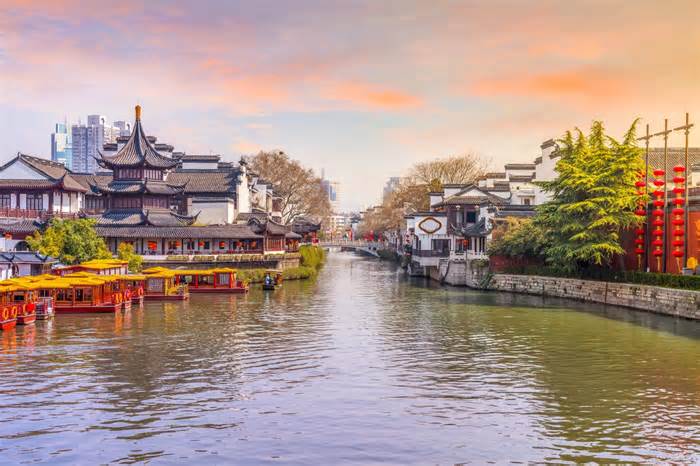Select a question above or ask something else
During the New Year of China, the national tourism expense reached 677 billion yuan, driven through a construction and income construction. The popularity of UNESCO of the New Year Lunar has promoted cultural tourism, with regional peoples that highlight their cultural heritage through various events. Output of burning too. He jumped 50%, with the countries of Japan and Southeast Asia being popular destinations due to the ease of access and profitability.
Chinese travelers spread across China this Lunar New Year, chasing snow in Harbin, warmth in Xiamen, and visa-free trips in Southeast Asia.
The trips generated 677 billion yuan ($ 93 billion) of national tourist expenses. According to the Ministry of Culture and Tourism, there was a construction of 5. 9% in volume and a construction of 7% of last year’s source of income.
China has experienced significant figures in incoming and outgoing tourism, with around 14 million cross -fund travelers in general, more than 6% until last year, according to China Trading Desk.
Foreign visitors accounted for about 1 million of this total, up 23 percent from last year, China’s national immigration administration said.
Trip. com Group discovered a 180 % construction in the orders of incoming excursion price tickets, while the hotel reservation for foreign tourists builds an update of more than 60 %. The 10 main participants are South Korea, the United States, Malaysia, Singapore, Japan, the United Kingdom, Thailand, Russia, Australia and France. Construction in the number of foreign tourists follows a series of more flexible visa policies introduced through China last year.
But this new lunar year, it is not only the same old mischief of Beijing and Shanghai drawing crowds: the regional cities rich in cultural heritage took the scene.
This year marked China’s first Lunar New Year celebrations, known as the Spring Festival, as it was officially added to UNESCO’s list of intangible cultural heritage last December.
UNESCO describes the list as a popularity of cultural traditions of everything global, such as current arts, social practices and festive occasions, which include “the wealth of wisdom and the transmitted skills of one generation to the next. ”
Chinese cities have relied on the boost of foreign popularity to highlight their cultural heritage through the organization of New Year occasions such as lion dances, temple fairs and folk performance, according to the ministry’s culture and tourism.
Experiencing local customs in culturally significant destinations was a “major focus” of this year’s Lunar New Year travel, according to Trip.com Group. Shijiazhuang, Fuzhou and Xi’an — rich in historical sites and heritage events — saw travel orders on the platform increase by 50%, 52% and 97%, respectively.
Fligy, the Alibaba service platform, saw similar findings in its 2025 spring festival report, pointing out an accumulation of 40% in the call for “intangible patrimonial tours. ” .
Although foreign visitors have basically been built in top-tier cities in China, such as Beijing, Shanghai, Guangzhou, smaller cities with popular ancient sites such as Dali, Zhuhai, and Beihai have noticed the development of interest in Qnar platforms.
Data from Tujia, a major Chinese homestay booking platform, shows that reservations by foreign tourists during the holiday increased by 3.7 times year-on-year, with 51 townships receiving foreign guests for the first time.
Beyond national trips, Chinese tourists visited more than 2,100 cities around the global lunar new year, marking a 50 % construction last year, according to China Trading Desk.
Short-haul destinations such as Japan, Thailand, Malaysia, Singapore, and Hong Kong led the numbers in outbound travel, with Japan topping the list. Trip.com Group reported that bookings to Japan doubled, while Southeast Asian countries like Thailand and Malaysia remained popular choices due to visa-free access and affordability.
Long-distance travel has also grown. Travel to the United States exceeds 53%, while travel to Europe has seen significant growth, Spain, Italy and France have a higher than 50% in bookings. While the official 8-day Chinese New Year holiday concluded on Wednesday, February 5, the rush travel season for holiday travel is expected to continue until February 22, with general cross-travel succeeding in nine billion.
Tags: asia, china, china travel, cultural tourism, lunar new year, travel trends, unesco
New users get20% offtheir first year of Skift Pro

